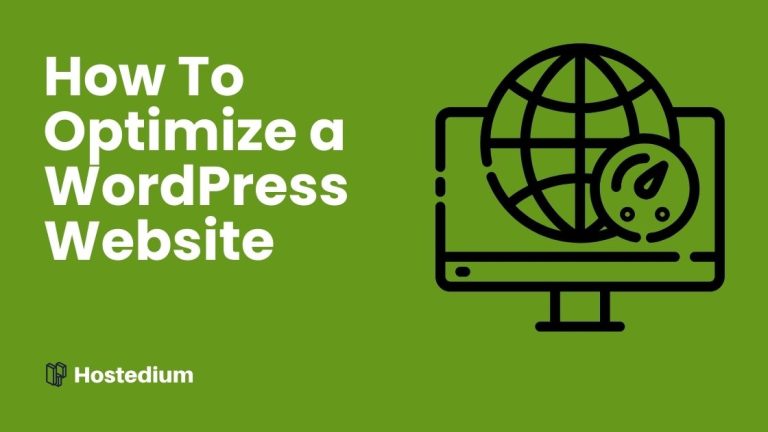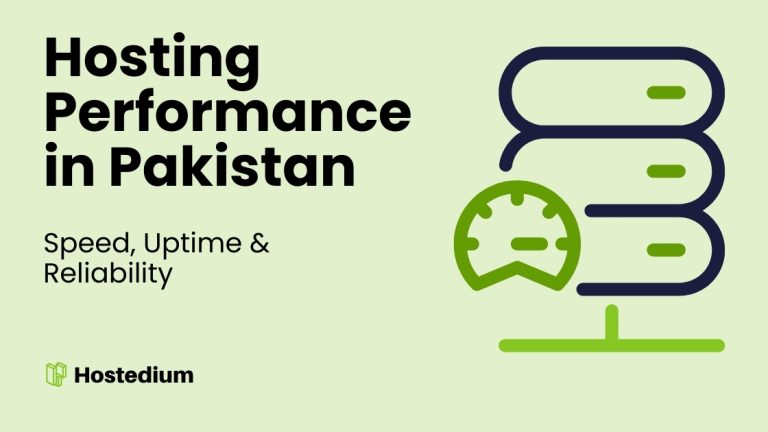Key Takeaways
- “Unlimited” ≠ infinite: providers apply fair-use via limits on CPU, RAM, I/O, entry processes, and inodes.
- Best fit: steadily growing content sites (blogs, portfolios, brochure-ware, multi-page business sites).
- Performance > label: stack (SSD, LiteSpeed/NGINX, HTTP/2/3, server-level caching) matters more than the word “unlimited.”
- Right-sizing: optimize first; upgrade only when you consistently hit resource caps.
- Plan for add-ons: domains and SSL from day one.
What does “Unlimited Hosting” actually mean?
Answer: No fixed cap on storage and/or bandwidth on paper, but your account still runs inside resource allocations to keep the server stable.
Evidence: Shared platforms commonly enforce limits through resource governors that control CPU, memory, I/O, and processes across accounts.
Is storage and bandwidth truly unlimited?
Answer: Not literally. It’s practical flexibility under fair-use.
Evidence: Expect controls on CPU share, RAM, disk I/O throughput, entry processes (concurrency), inodes (file counts), and email send limits. Providers also restrict certain uses (e.g., large backup archives or video hosting at scale).
Which limits should I verify before buying?
Answer: Check seven specifics.
Evidence:
- CPU: % allocation and burst policy
- RAM: guaranteed memory
- I/O: MB/s throughput
- Entry processes: max concurrent PHP/CGI
- Inodes: file count ceiling
- Email: hourly/daily send caps
- Fair-use: rules on backups, archives, media
Light note: Most WordPress sites feel I/O and concurrency limits first during peaks.
Who is Unlimited Hosting best for?
Answer: Sites that expand in pages and media without heavy compute.
Evidence: News/blogs, multi-page business sites with galleries/resources, portfolios, directories, and small multi-site setups typically benefit from storage/bandwidth headroom rather than raw CPU.
When should you avoid Unlimited?
Answer: If you plan to run resource-intensive apps, self-host large video libraries, keep backup archives on the host, or expect high concurrency (launches/flash sales) that saturates CPU/RAM/I/O.
Evidence: Those patterns trigger resource caps quickly; consider architecting with offloads (object storage/CDN) or different tiers when that’s your reality.
How much does Unlimited Hosting cost in Pakistan?
Answer: Above entry-level shared, below VPS.
Evidence (current tiers):
- Budget Hosting: PKR 599/month
- Business Hosting: PKR 725/month
- Unlimited Hosting: PKR 850/month
For foundational context, see Web Hosting in Pakistan – Complete Guide and plan details on Hosting or Unlimited Hosting.
Does “Unlimited” guarantee fast speed?
Answer: No. Speed depends on stack and optimization.
Evidence: Prioritize SSD storage, LiteSpeed/NGINX, HTTP/2 or HTTP/3, and server-level caching. Measure with GTmetrix and PageSpeed Insights; run multiple tests and average results. Guidance on mobile speed’s business impact is summarized by Think with Google.
What does “unlimited bandwidth” mean in practice?
Answer: Usually no fixed transfer cap, but throughput can be throttled if your usage threatens server stability.
Evidence: Offload large files to dedicated storage or a CDN. A CDN reduces distance for static assets but won’t fix a slow origin (heavy queries, unoptimized plugins, oversized images).
What uptime should you expect?
Answer: ≥99.9% is a practical standard; ≥99.5% is the minimum for SMEs.
Evidence: Each 0.1% drop translates to hours of annual downtime and tangible business impact (see analyses from the Uptime Institute). Monitor independently with UptimeRobot.
| Uptime | Downtime / Year | Verdict |
|---|---|---|
| 99% | ~3.5 days | Too low |
| 99.5% | ~1.8 days | Minimum |
| 99.9% | ~8.7 hours | Standard |
| 99.99% | ~52 minutes | Excellent |
Domains and SSL you’ll likely add
Answer: Plan them alongside hosting to avoid roadblocks later.
Evidence:
- .com: PKR 4750/year
- .net: PKR 4750/year
- .org: PKR 4350/year
- .xyz: PKR 999/year
- .pk / .com.pk:
- Comodo SSL: PKR 3750/year — enable HTTPS and fix mixed content for a clean padlock (details on SSL Certificates).
Setup & optimization checklist
Answer: Use this sequence for a clean, fast Unlimited setup.
Evidence:
- Enable server-level caching.
- Add SSL and enforce HTTPS.
- Configure a caching plugin (page/object).
- Compress images (WebP/AVIF), lazy-load media.
- Audit plugins/themes; remove heavy/redundant items.
- Confirm HTTP/2 or HTTP/3 and compression (Gzip/Brotli).
- Add a CDN if audience spans regions.
- Monitor uptime with UptimeRobot; run GTmetrix monthly.
- Review fair-use and inode limits; keep backups offsite.
- Re-test after each major change.
Common myths (and quick fixes)
Answer: Four frequent misconceptions.
Evidence:
- “Unlimited means I can host anything.” Fair-use policies restrict archives/video at scale.
- “Unlimited equals automatic speed.” Speed comes from stack and optimization.
- “A CDN fixes slow hosting.” CDN accelerates static assets; fix origin bottlenecks first.
- “Unlimited emails = unlimited deliverability.” Sending caps still apply; set SPF/DKIM.
FAQs
Q1: Is Unlimited Hosting good for WordPress?
Answer: Yes—especially for content-heavy sites. Keep images small, plugins lean, and caching on.
Q2: Can I host multiple sites on Unlimited?
Answer: Usually yes (check add-on domain and inode limits).
Q3: Will I still hit limits on Unlimited?
Answer: You can hit CPU/RAM/I/O caps during spikes or heavy tasks. Optimize first; reconsider plan if issues persist.
Q4: Do I need SSL on Unlimited?
Answer: Yes. Browsers and users expect HTTPS. See SSL Certificates. Price: PKR 3750/year.
Q5: Should I add a CDN?
Answer: If your audience is geographically spread or media-heavy, yes. It doesn’t fix slow databases or bulky code.
Q6: Is Unlimited better than Business for email?
Answer: It depends on mailbox quotas and send limits, not just plan names. Check caps and set SPF/DKIM.
Q7: What’s a realistic trigger to move to Unlimited?
Answer: When storage pressure and file counts (inodes) become a chore on lower tiers—even after cleaning media/logs.
Q8: How do I validate performance claims?
Answer: Run your own tests with GTmetrix/PageSpeed and track uptime with UptimeRobot for at least two weeks.




